The Feud: The Hatfields and McCoys: The True Story Read online
Page 34
Chapter 5: Moonshine and Love
1. Joseph Earl Dabney, Mountain Spirits, 10–11.
2. John R. Spears, “The Moonshiner’s Still,” New York Sun; and Dabney, 7–8. In an article that I found in the pages of the Sun in the spring of 2012, Spears detailed Devil Anse’s moonshining operation. He had been guided through Pike County on his research journey by Big Jim McCoy, who told him about the operation. With no byline and published two weeks after a well-known article by Spears in the Sun (that was reprinted as “The Dramatic Story of a Mountain Feud” in Current Literature: A Magazine of Record and Review), this article and two others about the feud by Spears that appeared on the same page had been lost to feud historians until now.
3. Logan County Courthouse Law Order Book B, 243. Sam Simpkins, Joe Murphy, and Bill Ferrell were also on the panel.
4. Thomas, 66–68, 71.
5. Truda McCoy, 24–26 ; Ely, 202; and Charlotte Sanders, “ ‘Hog Trial’ Is Part of Feud Legend,” Williamson Daily News. Jerry Hatfield lived in a two-story house where Hatfield Branch empties into Blackberry Creek. Preacher Anse would later move from Raccoon Hollow to this house.
6. John L. Spivak, “Interview with Cap Hatfield”; Truda McCoy, 25–27 ; and Spears, “Mountain Feud.” The Feb. 17, 1888, Courier-Journal (“The Hatfields Arrive”) reported that Wall confessed to having “five living wives and thirty-three living children” and noted that he had a “particular idea of polygamy and does not marry his wife according to law but takes them and appropriates his time out between them.”
7. Spears, “Mountain Feud”; Jones, 18–19 ; Rice, 19, 21; and Truda McCoy, 25–31, 222. McCoy described the meeting and courtship of Johnse Hatfield and Roseanna McCoy as told to her by Jesse Gooslin, who was present at the polling grounds, and by Martha McCoy, Roseanna’s sister-in-law (married to her brother Sam). Truda McCoy often overstepped the boundaries of historical accuracy when she re-created events (even supplying the interior thoughts of some of the individuals), but here she presented a plausible series of events and convincingly explained how this unlikely courtship came to be.
8. Truda McCoy, 28, 32. McCoy said that Devil Anse allowed Roseanna to stay out of spite for Randall, “enjoying the situation immensely,” knowing how much it would gall his adversary to find that his daughter was sleeping with a Hatfield out of wedlock.
9. Truda McCoy, 34–35, 249, and Spears, “Mountain Feud.” The only John Hatfield in Truda McCoy’s genealogy at the time was just fourteen.
10. Truda McCoy, 36–37.
11. Ibid., 38–39.
12. Logan County Courthouse Law Order Book B, 274, 298, 299.
13. Sam Hill, “Report of the Adjutant General of Kentucky”; Spivak, “Interview with Cap Hatfield”; and Waller, 273, notes 42 and 43, citing Commonwealth of Kentucky v. Andrew Hatfield, Elias Hatfield, et al. The romantic Truda McCoy (43, 47) wrote that the McCoys secured a warrant for “seduction.”
14. Truda McCoy, 39–40, 223–24, n. 5, and Howard, “Descendants of Reuben Rutherford, Sr.” Truda McCoy said that Aunt Betty was the wife of Allen McCoy, a brother to Sally. However, a highway sign identifies Aunt Betty’s house as the Uriah McCoy House and says she was Uriah’s wife, née Elizabeth Rutherford.
15. In Spears’s version of events, Roseanna was still living in her family home, but I have opted to follow Truda McCoy’s chronology, which had her already at Aunt Betty’s, believing this more likely than the two carrying on an affair under the nose of Randall and his sons, who were in a state of high alert. On the subject of catching the couple in flagrante, Spears noted: “In the eyes of the mountain folks along Tug River, this sight was enough to make the boys ‘right mad,’ but it was not a case for blood.” Some accounts give the lead role in the capture to Randall’s oldest son, Big Jim. As Truda McCoy (44) described the capture of Johnse, Randall and Jim were with Tolbert and Pharmer.
16. Spivak, “Interview with Cap Hatfield.”
17. Margaret Hatfield interview transcript, 4, and Spivak, “Interview with Cap Hatfield.” Spears said she borrowed a mule.
18. Crawford, American Vendetta, 50, 74.
19. Margaret Hatfield interview transcript, 4, and Spivak, “Interview with Cap Hatfield.” Spears said that Roseanna “ran the mule to Anse Hatfield’s house, Johnse’s home, and told what had happened [to] Johnse.”
20. Hill, “Adjutant General”; Spears, “Mountain Feud”; Sam McCoy, 63; L. D. Hatfield, 36–38 ; and Waller, 71. In Truda McCoy’s romanticized account, she wrote: “Randolph motioned to Johnse with his pistol. ‘Ye’ll never see her again.’ ” Roseanna wailed and thought “they meant to kill him—she was sure of it now” (45). She also maintained that Devil Anse raised forty men within ten minutes (46).
21. Truda McCoy, 48.
22. Margaret Hatfield interview transcript, 3.
23. Andrew Chafin interview transcript, 6–7.
24. Ibid., 26.
25. Some say Devil Anse shouldered his rifle to show just how displeased he was at the current state of affairs and that Cap urged him to kill the McCoys. Crawford (American Vendetta, 21) said Elias talked Devil Anse out of it. According to L. D. Hatfield (36–38), the Hatfields ordered the McCoys “to kneel and pray for they were going to be killed.” Only Big Jim refused the order, saying, “ ‘You can shoot me down, but I won’t get down,’ whereupon Devil Anse called to his men to hold their fire and said to Big Jim, ‘I admire you for the nerve you have shown.’ They were then allowed to go on their way.” In Truda McCoy’s version of events, a starry-eyed victim throughout, struck Devil Anse’s shotgun, which was aimed at Randall, after he “pulled back the trigger of his gun” (she must have meant hammer). The gun “exploded on the ground at the feet of Ranel’s mount” (47). Johnse thus saved Randall’s life. Neither account seems accurate, given the modesty of Tolbert’s filed complaint.
26. Keith F. Otterbein (“Five Feuds,” 232): “In a cross-cultural study of rape, I found that societies with a high frequency of rape also had a high frequency of feuding.”
27. Ibid.
Chapter 6: The Wages of Love
1. Lawrence Block, Gangsters, Swindlers, Killers, and Thieves, 103. It would not be until after the 1901 assassination of William McKinley that the Secret Service, founded in 1865, would take on the task of protecting the president.
2. Roy C. Woods, “History of the Hatfield-McCoy Feud with Special Attention to the Effects of Education on It,” 33, and Spears, “Mountain Feud.”
3. G. Elliott Hatfield, 211–12, and Donnelly, 28.
4. Truda McCoy, 311, and Waller, 36, 266, n. 10. Johnson and Sarah McCoy named their only child, a daughter, LeVicey Chafin McCoy, after her aunt.
5. Spears, “Mountain Feud”; Truda McCoy, 52–57, 224, n. 6, which noted that the child’s “birth, age, and death are unproved”; and Spivak, “Interview with Cap Hatfield.” A historical marker labeled SALLY MCCOY (no. 2176), on Kentucky Highway 272, marks the burial place and reads in part: “Sarah Elizabeth (Sally) McCoy… born in 1881… contracted measles and pneumonia, and died a few months after her birth.”
6. Truda McCoy, 59, 309–10, and Howard, “Descendants of Perry A. Cline.” Martha Jackson McCoy, Roseanna’s sister-in-law (married to her brother Sam), told Truda McCoy about the death of Roseanna’s baby, Alifair’s illness, Roseanna’s time at the Clines’ in Pikeville, Johnse’s visit there, and Roseanna’s refusal to marry him. Despite Truda’s portrayal of Johnse as a sympathetic, romantic, and tragic figure, historian Leonard Roberts, who edited her book, still concluded that Roseanna was “jilted to death by Johnse” (224, n. 6).
7. Truda McCoy, 61, 224, n. 6, and G. Elliott Hatfield, 211. Truda McCoy is the chief source of information on this period. Her chronology does not quite square with the fact that Johnse married Roseanna’s cousin Nancy McCoy on May 14, 1881. Little Sally could not have been born until at least April, and she lived for several months, making it unlikely that Roseanna could have nursed Alifair, cared for the Cline child, a
nd met and rejected Johnse in Pikeville before he married Nancy.
8. Truda McCoy, 11, 60–68, 224, notes 6 and 7, 226, n. 10, 313–14. Also, Ollie Jane McCoy Smith, Lark’s daughter-in-law, and Sadie McCoy in Charlotte Sanders, “Ollie McCoy Converted Larkin McCoy,” Williamson Daily News, Mar. 29, 1998 (reprint from 1982). Truda McCoy’s source was Elsie Phillips Ford, Nancy’s daughter by a later husband.
9. Waller, 66, 272, n. 31, and Sam McCoy, 124–25. Waller cited this date based on the Logan County law order books. All other accounts place the trial of Paris and Sam shortly after the murder of Bill Staton.
10. Truda McCoy, 23. Although McCoy provided no dates, she had both the arrest and trial of Squirrel Huntin’ Sam occurring before the Aug. 1880 election. Based on the account of her father, Jim Williams, she also said that only Sam and Paris testified at the trial, which contradicts the record. Sam McCoy was entirely mute on this topic in his memoir. Waller (Feud, 66) said that Paris was tried in Sept. 1880 while Sam was tried in the spring of 1882, but confused the chronology by relating the 1880 Election Day romance as if it occurred after Sam’s acquittal.
11. Truda McCoy, 23–24. It would be a continuing irony of the feud that many incidents pitted McCoy versus McCoy or Hatfield versus Hatfield. Here, McCoy testified against McCoy, and not just one or two brave souls. Eight McCoys from both sides of the Tug—Denas, Elliot, Eva, Jasper, Josephine, Sarilda, Sylvester, and Uriah—testified against the two brothers.
12. Louisville Courier-Journal, “Hatfields Arrive”; Jones, 23; G. Elliott Hatfield, 211; Truda McCoy, 316; Waller, 66, 272, n. 31; and Charlotte Sanders, “Beautiful Beech Creek Valley Not Always Peaceful,” Williamson Daily News. “Sam McCoy walked out of the courtroom a free man,” wrote Truda McCoy. “Both the judge and jury were convinced that it was a case of self-defense” (24). Not every account mentioned a jury, while Sam McCoy (124) did but claimed it was an all-Hatfield jury. “The acquittal of the two McCoy boys angered and outraged the Hatfields. They concluded that no West Virginian could get justice in a Kentucky court in a capital case,” wrote Spears (“Mountain Feud”), confusing matters, as the trial was held in West Virginia, presided over by a West Virginia justice of the peace.
13. Truda McCoy, 69, and Spears, “Mountain Feud.”
14. Truda McCoy, 69.
15. Ibid., 70, 309; Spears, “Mountain Feud”; Rice, 24; and Staton, 83–87. Tolbert’s first child was an out-of-wedlock son named Melvin, now two. Melvin’s mother, Adda Maynard, a daughter of Dr. J. B. Maynard, would also have a son, Wayne, by a Hatfield. The two half brothers would frequently fight each other, as one was a Hatfield and the other a McCoy.
16. Huntington Advertiser, “The Story of the Hatfields and McCoys According to A.M. (Lonnie) Lee.”
17. Mutzenberg, 36. West Virginia did not have a lock on this sort of corruption. In fact, during George Washington’s third campaign for the Virginia House of Burgesses, in 1758, after losing elections in 1755 and 1757, he supplied the 310 voters with 169 gallons of beer, cider, wine, and rum. He won this election, unlike the previous ones, when he did not ply voters with alcoholic libations, by a landslide (Dabney, 44–45).
18. Dabney, 27, and L. D. Hatfield, 16.
Chapter 7: Tumult on Election Day
1. John R. Spears, “Mountain News Getting,” New York Sun.
2. Regarding tobacco use, Thomas (13) quoted a hypothetical Appalachian old-timer: “Hit’s all right for the wimmin folks to smoke a pipe, p’tkler old granny wimmin…. But for us men folks it’s a heap more comfortabler for us to take a chaw of t’backer. We can step around where we’re a-mind to, not wearyin’ about a hot coal from the foirplace to keep a pipe a-going’.”
3. Donnelly, 6–7 ; Swain, 187; Waller, xi, 74; Spears, “Mountain Feud”; and Cathy Patton, Welch Daily News, “Hatfield Heirloom Warms Local Clan.” L. D. Hatfield (17–19) suggested that Ellison Hatfield was a marked man but otherwise confused who was involved in the killing of Bill Staton. He wrote: “Sometime prior to this date three of Randolph McCoy’s boys… had been over in West Virginia and had some trouble with these two Staton boys [Bill and John] and Bill Staton was killed by the McCoys.” But it was Paris and Sam McCoy, cousins of Floyd and Tolbert McCoy, who were involved in that incident. While some suggested that Ellison’s involvement in the violence this day was almost coincidental, L. D. Hatfield maintained that the McCoy brothers expected Ellison to be present and that they had “sharpened their knives so as to be in readiness.”
4. Spears, “A Mountain Feud.” Spears put the amount of money in dispute at $1.75; Rice (24) concurred. L. D. Hatfield (18–19) gave the amount as fifty cents. While Sam McCoy gave a graphic and detailed account of the events, he also confused the names and ages of the McCoy brothers, giving Pharmer’s age as thirteen and saying he was known as Bud, when that was the nickname of Randolph Jr., whom Sam referred to as Dick. Spears likewise gave a detailed and descriptive account that, while differing substantially from other standard accounts, had the ring of authenticity. However, he called Tolbert “Talbot” and described Bad ’Lias as a nephew of Ellison and Elias when he was in fact their cousin. While the argument was over a small amount of money, Spears later said Tolbert left his wife, Mary, with quite a substantial inheritance.
5. Regarding the ages of the McCoy brothers, there is considerable confusion. According to Kentucky birth records, Tolbert was born on June 16, 1854, which made him twenty-eight at this time. Truda McCoy (309–11) gave approximate birth years for Pharmer (1863), Bud (1864), and Bill (1866). This means that in Aug. 1882, Pharmer was eighteen or nineteen. “Bill was fifteen and somewhat large for his age,” McCoy wrote. “Bud, or Randolph Jr., was seventeen.” Mutzenberg (46) took his ages from Pike Circuit Court records for Commonwealth v. Val Hatfield, in which Sally McCoy stated that at the time of their deaths, “Tolbert was 31, Pharmer 19 and Bud 15 years old.”
6. Donnelly 19–24, and L. D. Hatfield, 19.
7. Spears, “Mountain Feud”; Rice, 24; and Swain, 187.
8. Spears, “Mountain Feud”; G. Elliott Hatfield’s genealogy (194) lists only one Matthew Hatfield (born 1848), a great-grandson of Eph of All and later a sheriff of McDowell County, West Virginia.
9. L. D. Hatfield, 19–20 ; Donnelly, 6–7 ; Mutzenberg 36–37 ; Prichard, 66; and Waller, 72. Various versions describe the fight in different ways. According to Sam McCoy (65), “Elison [sic] Hatfield… hollered out he were the best g.d. man on earth. Said it over three different times right in the presence of Tolbert McCoy…. Tolbert replied, you look more like a turd on earth than anything else I know of.”
10. Mutzenberg, 36–37.
11. Spears, “Mountain Feud”; L. D. Hatfield, 19–20 ; and Sam McCoy, 65. Spears was the only chronicler to record that Ellison was armed.
12. Sam McCoy, 65; L. D. Hatfield, 21, 22 (caption); Rice, 24; and Spears, “Mountain Feud.” The shirt that Ellison Hatfield wore when he was murdered, a faded plaid pullover made by his wife, was preserved and later came to be in the possession of Devil Anse’s son Joe, who holds it in a picture appearing in Life magazine on May 22, 1944. A shirt depicted in Coleman C. Hatfield and F. Keith Davis (The Feuding Hatfields and McCoys, 166, 171), although said to be the same shirt, does not appear to match the one in Life magazine, nor is it in the collection of the West Virginia State Archives as reported.
13. Sam McCoy, 65. Also, L. D. Hatfield, 19–20, and G. Elliott Hatfield, 212–13.
14. Spears (“Mountain Feud”) and others. Pharmer’s name is spelled variously “Pharmer” (Sam McCoy, Truda McCoy, and Rice); “Farmer” (Spears); and “Phamer” (Mutzenberg and Jones). Once again, we have conflicting accounts of what happened at this point: Mutzenberg (38) wrote that Pharmer “dropped the weapon and sought safety in flight. He was pursued by Constable Floyd Hatfield [as opposed to Matthew] and captured.” Sam McCoy (66) reported that Elias fired his gun in Pharmer’s face three times from point-blank range but missed. “His face were all powder burnt,” Sam described, �
��but the bullets went wild, never touched him.” Amazed, Elias declared, “I’ll never try it again. If I can’t hit a man that close, I’ll quit.” Rice (24) maintained that Elias “forced the revolver from Pharmer’s hand and tried to shoot him” before he “ran and sought cover in the nearby woods.” According to L. D. Hatfield (21), Elias “rushed up and grabbed Tolbert McCoy by the shirt collar and emptied his revolver in his face but every shot missed its mark.” L.D. was the only one to identify Tolbert as the intended victim.

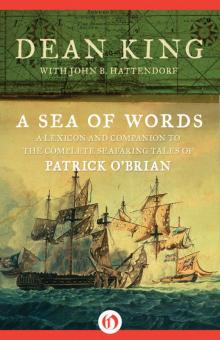 A Sea of Words
A Sea of Words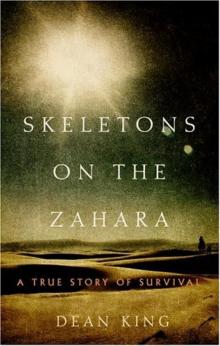 Skeletons on the Zahara
Skeletons on the Zahara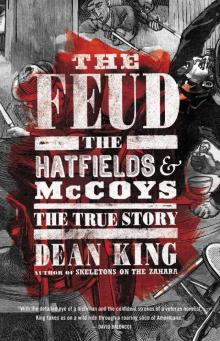 The Feud: The Hatfields and McCoys: The True Story
The Feud: The Hatfields and McCoys: The True Story Every Man Will Do His Duty
Every Man Will Do His Duty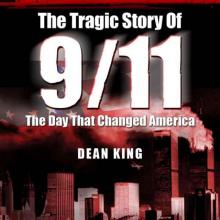 9/11...The Tragic Story of the Day that Changed America: The Terror, The Horror and The Heroes
9/11...The Tragic Story of the Day that Changed America: The Terror, The Horror and The Heroes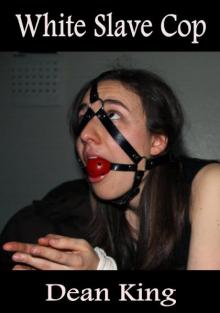 White Slave Cop
White Slave Cop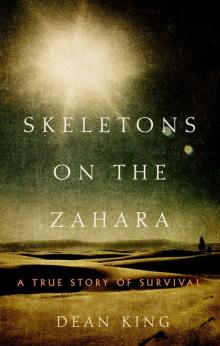 Skeletons on the Zahara: A True Story of Survival
Skeletons on the Zahara: A True Story of Survival